6 Ways To Fix Low Water Pressure in Kitchen Sink
Disclosure: Faucetshowerguide.com is reader-supported. We may receive commissions from purchases made via our links at no additional costs to you.
If your kitchen faucet has low water pressure, it can be a painful situation especially when you clean dishes. It becomes frustrating to clean dishes with low water pressure.
A faucet makes it easy to access water for various tasks in the kitchen. But with low water pressure making it harder to fill pots or clean dishes, it’s natural to get frustrated. Fortunately fixing low water pressure in the kitchen sink faucet is not difficult and can be done with ease.
A faucet is one of the most important aspects of your kitchen so it should work properly. Whether your faucet is new or old, you may get low water pressure from it. Let’s take a look at some common reasons for low water pressure in the kitchen faucet and how you can fix them.
Best Seller
Moen Adler Spot Resist Stainless With High Water Pressure
Powerful rinse and aerated spray, Cleaner-looking kitchen faucet, PowerClean technology provides 50% more power
Why Is My Kitchen Sink Faucet Water Pressure Low?
There are a few different reasons why you are getting low water pressure from the kitchen faucet. It could be an issue with the water supply of the house or it could be an issue with the plumbing system in the home.
If you are not sure what is the reason, there are a few things you can try to check the cause of low water pressure. First, check all faucets in the house have a low water pressure or not. If they have, then it’s likely an issue with the main water supply of the house and you need to contact your local water supply company.
If only a single faucet has an issue in the kitchen then could be one or more of the below-mentioned reasons. If you find any, then you’ll need to get them fixed.
- Shut-Off Valves Not Working Properly
- Clogged Kitchen Faucet Aerators
- Clogged Kitchen Faucet Cartridges
- The problem with Pressure Reducing Valves
- Damaged or Clogged Water Pipelines
- Low Water Pressure From the Municipal Water Supply
1. Shut-Off Valves Not Working Properly
As the name suggests the work of a shut-off valve is to stop the water supply to the faucet. In general, under any kitchen sink, you will find a shut-off valve.
When you face low water pressure in a faucet then the first thing you need to do is check whether the shut-off valves are fully open or not. It may be possible due to mineral build-up, water pressure may not increase even when the valve is fully opened.
2. Clogged Kitchen Faucet Aerators
When the water pressure in the faucet decreases, the aerator should be checked to whether it is working properly or not. It has small holes from which water comes out and the aerator is placed at the tip of the kitchen faucet.
A clogged aerator can be a nuisance to the water pressure. There are some common reasons why your faucet aerator is clogged.
Many times, municipal water’s garbage gets trapped in these holes, due to which the pressure of water is reduced.
One of the most common reasons for a clogged aerator is mineral buildup. Over time, minerals from water can create build-up inside the faucet aerator. This build-up closes the aerator holes and makes them clog.
Another common cause of a clogged aerator is rust. In some areas, the quantity of iron in the water is more than the normal level. This iron can rust buildup inside the aerator.
If there is hard water in your area, then you will face clogged aerator problems more often but don’t worry here are some best-rated hard water faucets for the kitchen which will eliminate the low water pressure problem in the kitchen faucet.
3. Clogged Kitchen Faucet Cartridges
If the aerator is not the reason for low water pressure then maybe a cartridge is. The cartridge and aerator both are the main reasons for the low water pressure in the kitchen sink.
The main work of the cartridge is to adjust the water flow of the faucet. The cartridge is connected to the handle of the faucet so whenever you move the handle, the cartridge also moves and adjusts the water flow.
The cause of a clogged or damaged cartridge is mineral particles and debris. A clogged cartridge won’t move properly and blocks thy way of water so you will get low water pressure.

Best Seller
Moen Adler Spot Resist Stainless With High Water Pressure
Powerful rinse and aerated spray, Cleaner-looking kitchen faucet, PowerClean technology provides 50% more power
4. Problem in Pressure Reducing Valves
This valve is used in many homes. Its function is to control the pressure of water in the faucet. In some houses, it is connected at the entrance of the main pipeline of the house so that the water pressure of all the drains of the house can be fixed simultaneously.
In some households, there is a valve under each faucet, so that the pressure of each faucet can be adjusted separately.
Someone may have tightened or loosened this valve, causing a water pressure change.
This valve looks like a bell shape, making it easy to identify. You have to rotate this valve with the help of tools so that you can set the pressure of the water according to yourself.
5. Damaged or Clogged Water Pipelines
Another reason for faucet low pressure is damage to water pipelines.
There may be a leakage in the pipeline of the house after a few years of building the house. The pipeline is in the walls and below the floor, due to which there is a small thick leakage and it may be not visible from the upside.
There are two ways to detect leakage or damage in a pipeline. First, check the flooring of your house carefully, if you see wetness or moisture in the floor, there is a leak in the pipe.
In this way, it will be fully proven whether there is any leakage problem in the pipeline of the house. For this, you will need a water meter. Turn off all the faucets in the house and take a reading with the water meter once.
Now keep all the faucets closed for a few hours and take the reading again after 4-5 hours. If there is any change in the reading of the water meter, there is leakage in the waterline.
In addition, feeling around the base of the fixture can help identify leaks. If the area is damp or wet, this means that water is seeping through somewhere and needs to be addressed immediately.
6. Low Water Pressure From the Municipal Water Supply
How will you find that kitchen faucet low pressure due to the municipal water supply?
The best way to do this is to first check all the faucets in the house, if all the faucets are getting water from the same pressure, then ask your neighbors if the water is coming from low pressure in their homes, then the reason why municipal water supply is the reason.
This is not a permanent problem. It may be due to some technical fault that the water pressure in the municipal water supply has decreased.
Its solution is that you will have to wait for a few hours, when the pressure increases in the municipal water line, then the pressure in your household faucet will also increase. Another solution is that you can use a booster to increase water pressure in the kitchen sink faucet.
DIY Fixes For Low Water Pressure in the Kitchen Sink Faucet
So, now you know what are causes of low water pressures in the kitchen sink faucet are. Now let’s discuss solutions for every cause in detail. All these solutions are DIY, so you can try them easily.
Tools you needed to fix low water pressure –
- Allen wrench
- Vinegar
- Pliers
- Screwdriver
- Plastic tape
- Old toothbrush
- Cloth
- Cartridge removing tool
- Pin
- Bucket
Fix Shut off Valve
The solution to the shut-off valve problem is simple. Turn on the valve first with the help of a wrench and check the pressure of the water.
If there is a difference between the pre and post-pressure, then there is no need to check other solutions on the list.
This valve always remains in an open position and no one touches the valve so with time residuals of minerals build up inside the valve so water gets low space to flow. So, it’s time to change the valve.
To change the valve, first, turn off the water supply. Open the valve with a wrench and other tools and replace it with a new valve and turn on the water supply again and check the pressure.
How To Clean Clogged Kitchen Faucet Aerators?

- First, you need to remove the faucet aerator for this you need some tools like slip-joint pliers and a wrench. In some faucets, aerators can be removed by hand so you can try your hand, if you get succeed then no need to use any tools.
- While using any tool cover the sink with a cloth so that If a tool accidentally slips while opening the aerator, there will be no scratch marks on the sink.
- If the tool on the faucet is not able to hold due to water, then put plastic tape on the aerator, which will make a strong grip for the wrench on the faucet.
- Leave a few hours of soaking it in the vinegar to open the closed holes of the aerator.
- If you don’t have vinegar then you can use an old toothbrush, rub the toothbrush on the aerator for a few minutes, or you can use a pin and put a pin in every hole one by one this is a time-consuming process but effective.
Fix Clogged Cartridge
- Shut off the water supply to the faucet and keep the faucet handle in the turn-on position so all the remaining water from the faucet will be wiped out.
- Cover the sink drain with any cloth or plastic so that by mistake any faucet part or screw doesn’t run down in the drain.
- Now locate the screw on the handle and remove it with a screwdriver.
- Remove the screw and lift up the handle of the faucet.
- Pull out the cartridge from the handle.
- Clean the cartridge with water or you can use an old toothbrush to clean and remove minerals that build up from it.
- Vinegar is another option to remove build-up. Keep the cartridge in it for a few hours and then clean its water, all the residuals will be wiped out, and reinstall it.
- If the cartridge is not in good condition, get a new cartridge and install it in place of the old one. You may check this video to know more about cartridge replacement.
Repair Pressure Reducing Valve To Increase Water Pressure
The solution to pressure-reducing valve problems is the easiest. You do not have to open any part.
You need a wrench. Rotate them clockwise and anti-clockwise to the valve with the help of a wrench. Check the pressure of water alternately on both sides. Tighten the valve by rotating the side water which is getting more pressure.
Fix Damaged or Clogged Water Pipelines
The solution to the damaged water pipeline problem is that you will have to change the leakage pipeline.
Because the pipeline is under flooring, therefore, if you take the help of the plumber for this work, then it will be right, or else you may spoil the flooring of the house the matter of correcting it yourself.
Check also – How To Increase Water Pressure In Shower? | Low Water Pressure In One Faucet Only
What Causes Low Water Pressure in Only One Faucet?
A choked pipeline due to residuals of minerals is the main reason for low water pressure in only one pull-down faucet not in the whole house.
If the pipeline is working well then a faulty cartridge or aerator is another possible reason for low water pressure in the only kitchen faucet. To fix it we have shown all the solutions in this article.
How To Fix Sudden Low Water Pressure In Kitchen Sink?

Sudden low water pressure drop in the kitchen sink mostly occurs due to plumbing issues. Recently there is no plumbing work done in your house and you have added some extra faucets in the house, it increases the demand for water and results in you getting sudden low water pressure in other facets of the house.
To solve it, you need to increase the water supply in the house. Most people use the pressure-reducing valve to control the water flow that comes through the municipal water. You can find it at the entrance of the water line in the house.
Loosen the valve to increase the water supply in the house. An adjustable wrench will help you to loosen it. Now check the water pressure in the kitchen sink faucet, it will be ok now.
In the morning, you are cleaning dishes for breakfast and see a sudden drop of water in the kitchen sink faucet, it mostly happens because in the morning family members get ready for the office or school so most faucets in the house are busy, and causes water drops in the kitchen faucet.
Why Low Water Pressure in The Kitchen Sink After Replacing The Water Heater?
What causes low hot water pressure in the kitchen sink? If you notice low water pressure in the kitchen sink after replacing the water heater then this is not an issue of plumbing. This is an issue with the connection between the water heater and the faucet.
Check the outlet of the water heater is fully open or not. If not then open it fully. Check the pipeline which is connected between the water heater and kitchen sink faucet. Sometimes due to the build-up of minerals pipeline gets choked and less amount of water flows in it. Changing the pipeline is the only solution to the problem.
FAQ About Lower Water Pressure In Kitchen Sink Faucet
Why Does My Sink Sprayer Have Low Pressure or No Pressure?
The main reason for the low pressure in the sprayer is a blockage in the pipeline of the sprayer. Due to the minerals, the layer of mineral residuals on the body inside the pipe starts to freeze, which gets thicker over time. The layer can be removed using chemicals.
Why Low Cold-Water Pressure in The Kitchen Sink Only?
In the kitchen faucet, there are two outlets for hot and cold water and the connection for both is different. So there is a chance that hot water is coming out perfectly but cold water is facing a kitchen faucet low water pressure issue. To fix it check the supply line of cold water and clean it with drain cleaners.
How to Increase Water Pressure in The Sink?
There are two ways to increase the pressure of water in the sink, first use the booster. Water pressure increases due to a booster. If the water pressure is not get increased in all the ways mentioned above, then the booster is the best solution. Also, you check the pressure-reducing valve, maybe someone has adjusted the valve which has reduced the water pressure. You can increase the water pressure in the sink by setting it to the correct position.
Final Words
We have covered all the possible reasons for low water pressure in kitchen sink faucets and also given solutions to all the low water pressure problems. The low water pressure problem is not good for kitchen faucets and it wastes lots of time in washing. If you have any advice or suggestions about the low water pressure problem then please share your thoughts in the comment section.

Meet Ralph Matthews, father of 2 cute daughters and a skilled plumber with over 10 years of experience in the industry. Ralph has particular expertise in repairing any type of faucet and has helped countless homeowners and businesses solve their plumbing problems with his expert knowledge and attention to detail.
Recommended By Faucetsshowerguide's Team
Best Kitchen Faucets of 2025: Sleek, Durable & Worth Every Penny Check Our Review
Best Touchless Kitchen Faucets for Effortless Cooking Check Our ReviewBest Touchless Bathroom Faucets That Add Luxury & Hygiene Check Our Review

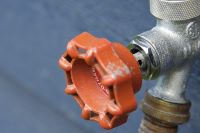
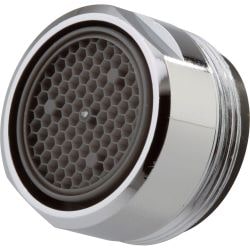
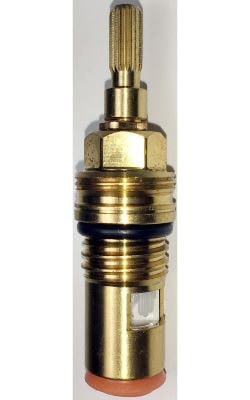
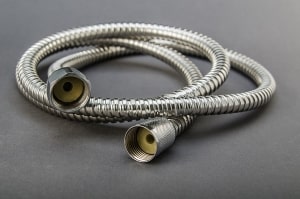

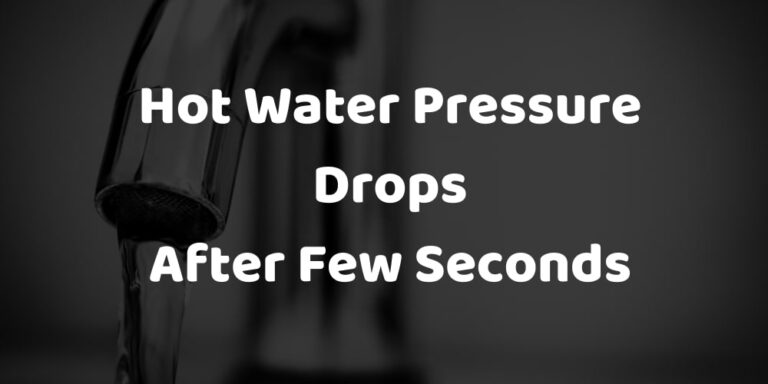

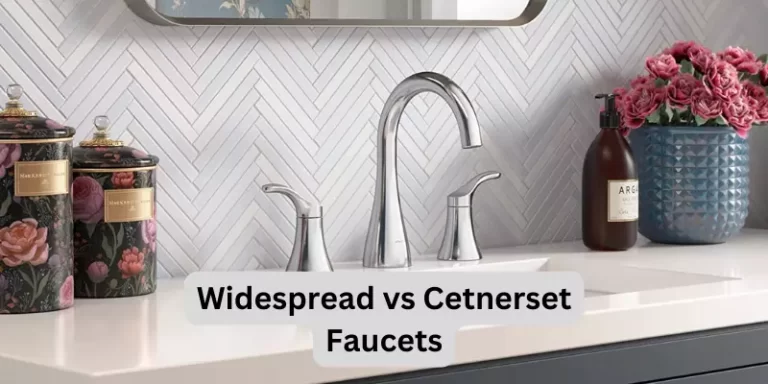


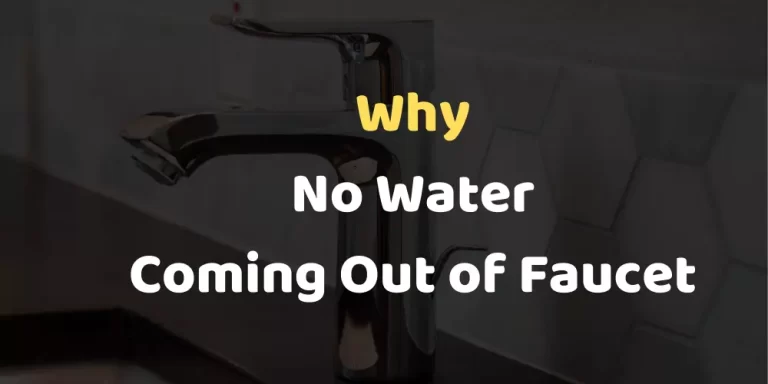
I am about to purchase new home and when I did a walk through, the house has inconsistent water flow and pressure throughout. The two sinks near the hose big are perfect – excellent flow and volume, but the kitchen sink (Moen Faucet) and utility sink have poor water flow and volume. Another bathroom with a sink has dreadful volume and flow but the shower and bathtub have excellent volume and flow. In the Master Bathroom one sink has excellent pressure while the other has terrible water flow and volume. Not sure I understand what is going on here. What could have happened.
It looks like faucets that have low water pressure are not in the good condition and need some repairing or replacement.
Hi Ralph,
I am in property magnagrment for a long time. HOA single level to 22 floor high rise). Not that I’m reading plumbing sites as a rule but I do make a point of educating myself. You have one of the best sites I have ever read with a photo to each topic. Well done!
I happen to be in my own situation w a renter next to me by a dividing wall. Now that he has chosen to use his own tools (unauthorized) to raise the water pressure, I now have continuous loud rushing water in the pipe line next to the wall (his bathroom), and wall with no sound barrier. I believe he has set the psi too high. Am I stating that correctly?
Last question: I believe one can raise the water pressure under a bathroom or kitchen sink other than by turning the faucets under either sink itself.
Yes, he can do it.